SETTING THE SCENE
The Big Bend area of Texas is considered one of the wonders of the Southwest. Wild, isolated, and vast with desert, mountains, and river canyons. The early Spanish explorers called it “el despoblado” or the uninhabited land. Visitors were impressed with the vistas they viewed, and today the area is still mostly unexplored and uninhabited. The area is so rugged that it took a while for railroads to be built into the Big Bend due to the unforgiving scenery and remoteness.
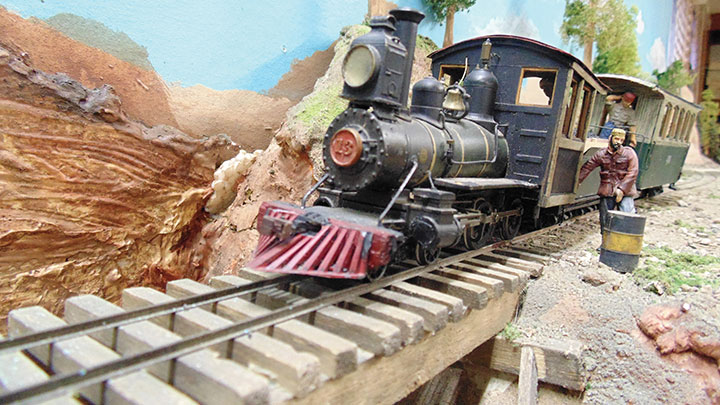
However, as a modeler I can imagine a could have been, but wasn’t, railroad that did exist in the Big Bend. And not just any railroad, but a 2-foot gauge mining line that could tap into the mineral riches that abound along the Rio Grande River. The places my railroad passes through are real, but using modeler’s license, they aren’t located where they are.

My 1:35 scale, 2-foot gauge (35n2) Terlingua, Glenn Springs & Boquillas Railway begins (or ends) at the old ghost town, Terlingua. There were several cinnabar (mercury) mines at Glenn Springs, now another out of the way old town almost hidden in the canyons of the Big Bend. And Boquillas, a small settlement on the Rio Grande River, has a historic aerial bucket tramway that carried ore from the many mines out in the canyons. The tramway is now a Texas historic landmark. These are the places that the TGS&B Ry calls “home.” A search about the Big Bend on the internet shows just how the area looks and what life is like along the border. But it won’t show the railway, that is in my garage.
Almost twenty or so years ago, I built an On20 railway in my dining room called the Mogollon Railway. I described this model railway in the July/August 2000 GAZETTE. That layout was inspired by the 2-foot gauge Silver City, Pinos Altos & Mogollon Railroad. I had fun building and running this small Shay-powered line until I became interested in On30 about the time Bachmann brought out their little Porters and Shays. I gave away the Mogollon Railway and joined a local On30 modular group that was forming. At that same time, I decided to try installing radio control and batteries in my locomotives since they were large enough to hold the equipment, so I would never need to wire a layout or clean track anymore! My locomotives use radio control boards from high quality model cars and the new Lithium-Polymer rechargeable batteries.
35n2
Later, I became interested in military 1:35 scale since there are so many military details I could use, and the military figures could be modified to become civilians and train crews. Military modelers use 8.79mm to the foot in 1:35 scale. That is an awkward scale, so I went on the internet and bought a 1:35 scale ruler. Just Google 1:35 scale ruler and you will find several available. I love scratchbuilding, and since there are no American type 1:35 scale structure or rolling stock kits, I could have fun making my own buildings and freight cars. But the real reason I chose this unusual scale to model a narrow gauge line was that my On30 locomotives could be upscaled easily and 16.5mm HO gauge scales out to 24-inches in 1:35 scale. I have always wanted to model a 2-foot gauge line. I came close with On20 (too narrow) and On30 (too wide). I chose 1:35 scale so I could have what I had wanted for so long, and the radio control equipment fits perfectly in the slightly larger locomotives.
As I mentioned above, many On30 locomotives can be modified into 35n2 with new cabs and crews. My 19 ore cars and 10 or so other cars were built using strip wood, plastic, and certain Precision Scale and Grandt Line O scale detail parts. I lucked out on the ore car trucks since Bachmann On30 trucks become 1:35 scale 36-inch wheelbase arch bars like those used under many 2-foot cars. There are many other items that can be used, such as antique automobiles and pick up trucks. These are actually 1:32 scale but fit in perfectly with 1:35 figures. The difference in scale is not noticeable anyway. And prices? I have bought two Ford Model Ts for $10.00 versus 1:48 Model T kits for $50.00 or more, and the 1:35 models have better details.
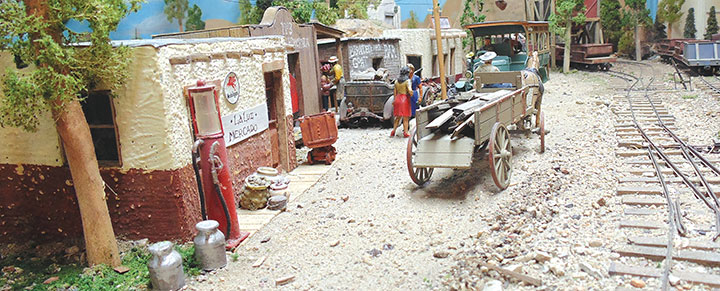

When I started in 1:35 scale, I tried to keep link & pin couplers as standard equipment. Through the years it has been a problem to operate them, having to use tweezers to pull pins and hold links. I didn’t run trains very much since it was a real hassle. So, the layout benefited, being detailed, and finished in a manner that satisfied me. Yes, I did run some trains, but it was a chore with such hands-on couplers. Using R/C meant I never needed to clean the handlaid track, so long periods of no operation were the norm. However, recently I decided to modernize the line with Kadee knuckle couplers. I bought bulk packs of #5s and installed them on all the cars and locomotives. This has made it possible to really enjoy running trains. Now that the layout is well done, the joy of being able to run trains without tweezers is such a wonderful thing.
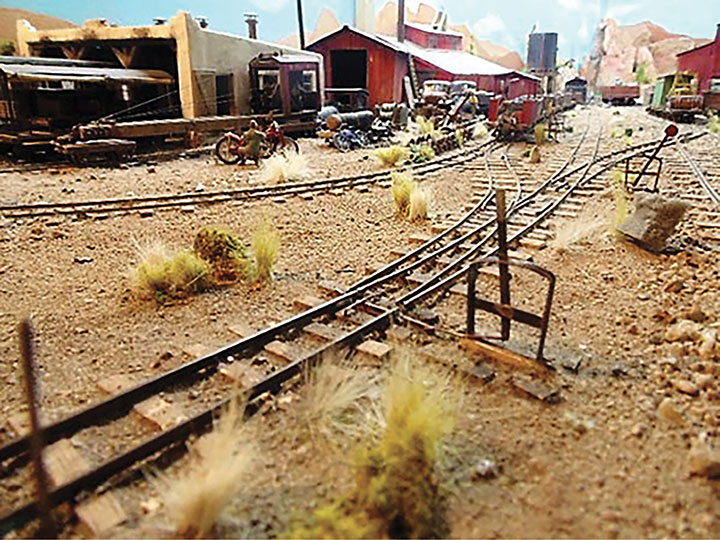
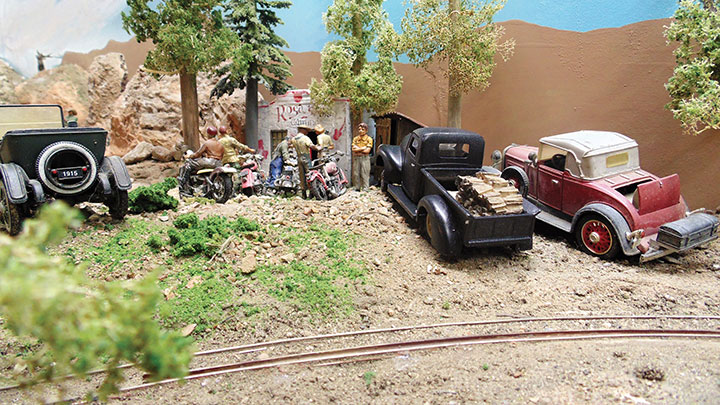
Over the years, I have built some structures that survived being outdoors for a few years and later languished in dusty boxes. But now, I have begun fixing up these old buildings and giving them new lives on this layout. I just hate to throw away things, especially stuff that I spent time, money, and love to build. I still have shelves of old structures and boxes of details that need to be used again, and in time, maybe I will find a place somewhere on the layout for them. One example is an old stucco building that particularly appealed to me, but was too large for the new layout. I had the idea that if I cut it in half I could use the front for a building against a backdrop — like a flat, and the back side as another structure in another location. Then I could have two buildings without much work in 1:35 scale. I have amassed a great many Grandt Line O scale windows and other parts, the doors are a bit too small, but with a little work can be used.
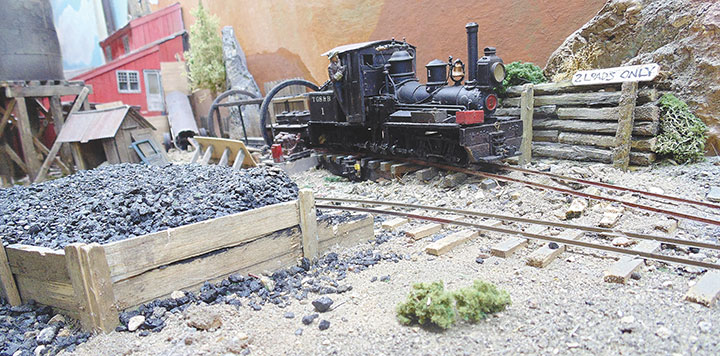
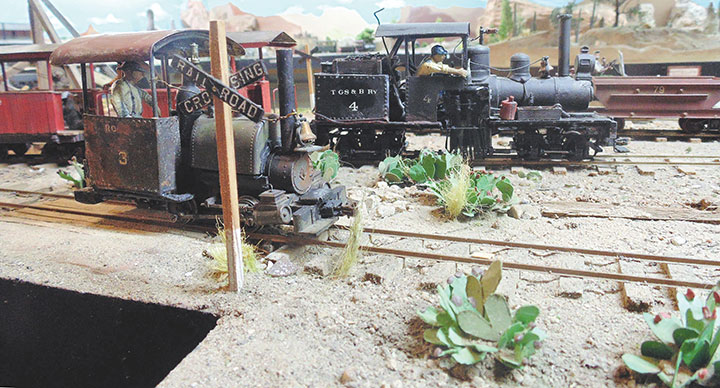
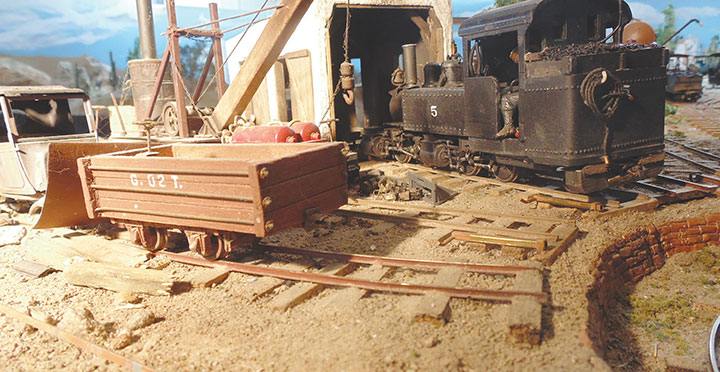
So far, I have converted Bachmann Porters, a Shay, 4-4-0, and a 2-4-4-2 converted to become a tank locomotive because it was too long for the end of the line turntables. Basically, just cabs, some larger O scale details like headlights, and crewmen, and they become great 1:35 scale 2-footers — just what I want! Someone asked me if there were any 1:35 scale rulers available, and yes there are.
Most cars on my railroad were scratchbuilt, except for a few 1:35 scale laser-cut passenger cars designed by my friend, Daniel Caso, in Amsterdam, and a wonderful 1:35 3D open tourist car by another friend, Tom Bell, in France. These are magnificent models, and while the laser cars of Daniel’s were easy builds, Tom’s open car even has slatted seats with iron frames. All I had to do was build an underframe and paint it.
Another car is a wooden On30 model of a Mich-Cal water car built by a great friend, John Foster, who passed on last year. Even though it is O scale, it looks fine with my other 35n2 cars. I prize all these models and they get used in the operating scheme.
What does the future hold for my 35n2 layout? That’s hard to tell, but for now there are projects to finish, maybe a freight car or two to build, even a new locomotive to be considered. But then, that’s the fun of it all. Oh yes, I still have the fourth or fifth rail truck to complete, but that’s another story.